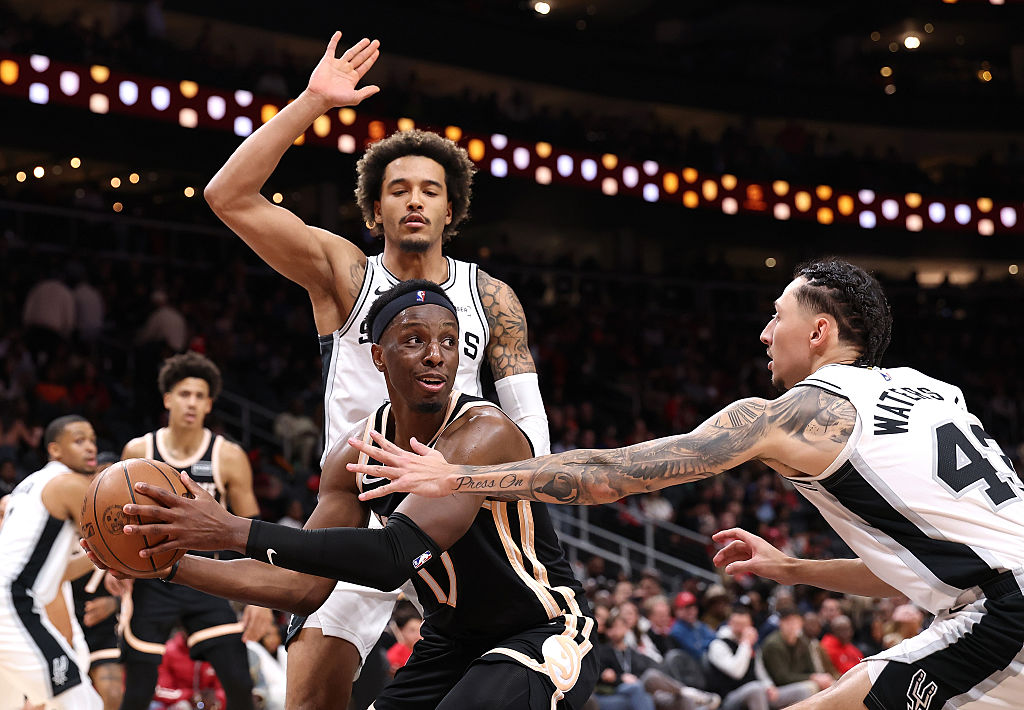Bożena Ratter: The Alliance of Piłsudski and Petlura
date:01 September 2025 Editor: Anna
Piłsudski entered into an alliance with Petlura in the state of head of a traveler who traverses the Sahara and is willing to rent any animal with a hump. Poles gave him six weeks to organize administration and form an army. However, there is no evidence of success in this field. His government was unwelcomed both by Machna, by Wrangla in Crimea, and the leaders of Bolshevik Ukraine in Kharkov– Norman Davies (The Eagle of the White Red Guard) writes about the alliance of Piłsudski and Petlura.

The legend of the asymmetric alliance refers to the Ukrainian-Polish war lasting from November 1918 to July 1919, in which the Ukrainian Halick Army committed a number of war crimes on Polish soldiers and civilians. The Polish parliament even set up committees to analyse them. Due to fear of criminal responsibility, many ZURL officials and UHA soldiers remained on emigration. On 25 and 26 August 1920, about 1,700 Ukrainian soldiers from the confederate section of the front deserted and fled to close Czechoslovakia. (Dr Artur Brożyniak IPN Rzeszów)
The legend of the asymmetric alliance is maintained by Piotr Hlebowicz in Kuriera Wnet in 2017: Polish-Ukrainian cooperation during the Polish-bolshevik War in 1919-1920 is an example erstwhile Poland signed a treaty on relationship and cooperation with Simon Petrula.
It was not a treaty on friendship, it sounds like a communist slogan for “Polish-Soviet friendship” which cost us millions of human victims and a robbery of national property. The Ukrainian Socialist Republic of Rad only appeared in the 20th century and signed the Treaty of Riga in 1920 and Ukraine has existed since 1991.
diary of Cieszyn on March 15, 1919:
Warsaw, March 12. According to information, coming to the Ministry of abroad Affairs, Petlura was to put up a coalition ultimatum. The Ukrainian eventual demands for aid against the Bolsheviks of all east Galicia as far as San. If he refuses, he threatens to break ties and start war steps against the coalition.
Stanisław Lis-Błoński, liaison officer of the Polish Army (designated by Piłsudski) during the 1920 Polish-bolshevik War writes in a report: With the failure to form the Ukrainian army at the end of May 1920, they began in any places of the Winnitsky region, in villages and settlements, clear riots among the local Ukrainian population ... Ukrainian peasants frequently hit, if he could, the outgoing soldiers-brothers of theirs, as well as those soldiers who, at the command of their Leader, came to shed blood “for our valor and yours.” Not even all intelligence was acquired to fight for Homeland independence. What about Ukrainian youths? Is it the same as the Polish Boy Scout? Like a young student who went to his death with an anthem on his lips, with the motto of fighting for the liberation of Homeland? The youth of Ukraine at this time, I say it with all awareness, during the reconstruction work I did not see at all. (Stanisław Lis-Błoński).
The Wolsheviks were fought by the police and the soldiers were victorious in the Warsaw Battle. The same Poles, specified as General Stanislaw Maczek, fought after the aggression of the self-proclaimed URL in 1918 in defence of Lviv and Malopolska Wschodne, recovered Stanisławów, Drohobycz from Ukrainian hands from 1918-1919, chased down Bolsheviks in 1920, and then again in 1939 in defence of Lviv, Stanisławów, Grodna, Vilnius, murdered by Germans, Ukrainians, Russians just for their participation in the fight against Bolsheviks in 1920, sent in action the extermination of Polish intelligence in 1940-1941 to the inhuman land erstwhile they survived the triumph of Falaise or Monte Cassino. Murdered by Ukrainian fascists from 1939 to 1947.
Jerzy Janicki mentioned the incidental at the Łychakovsky Cemetery during the visit of president Kwasniewski:
"Someone" exchanged a evidence at the cemetery at night, on which he and Kuczma would bow. The content of the inscription, long and painfully determined by a joint Polish-Ukrainian committee, unexpectedly received a completely fresh version. This is alternatively of "Polish soldiers who died in the defence of the Republic from 1918 to 1920", according to the night adjuster it was now: "Polish soldiers who died in war against Ukrainians in years..." and so on.(Jerzy Janicki Czkawka).
Norman Davis (not only him) besides described entering Kiev:
As 1 Polish veteran said, “We drove all the way to Kiev and drove all the way back.” The patrol of Polish seamstress was in Kiev on 3 May: soldiers arrived from the northern suburbs to the center by a captured tram, took prisoner a amazed russian officer who stood at the stop, and withdrew as shortly as they arrived.
... The next morning, the main Polish forces marched through streets that nobody defended. The soldiers in the barrels of the rifles had mangled flowers, military and transport columns filmed among residents who were buying and did not pay much attention to the fifteenth change of power in 3 years. (Norman Davies Eagle White Red Guard).
It is May 2020 Reporters of the Galician Courier and Radio Wnet (Paweł Bobołowicz and Dymytr Antoniuk) "move the way of Polish and Ukrainian heroes" who fought in the Polish-bolshevik War. The action final will be held on 9 May in Kiev due to the fact that on 9 May 1920, after the Bolsheviks were displaced by Polish and Ukrainian troops, a military parade passed through Kiev streets. Journalists follow the way of cemeteries and battlefields on which Polish and Ukrainian soldiers were fought and buried.
Or would Polish journalists follow the way of death, fields and forests, meadows and lakes, the ruins of buildings erstwhile developed by Poles, the way of cemeteries and battlefields on which Poles died not only during the war 1918-1919?
Oh, my God.
The legend of the asymmetric alliance is maintained by Piotr Hlebowicz in Kuriera Wnet in 2017: Polish-Ukrainian cooperation during the Polish-bolshevik War in 1919-1920 is an example erstwhile Poland signed a treaty on relationship and cooperation with Simon Petrula.
It was not a treaty on friendship, it sounds like a communist slogan for “Polish-Soviet friendship” which cost us millions of human victims and a robbery of national property. The Ukrainian Socialist Republic of Rad only appeared in the 20th century and signed the Treaty of Riga in 1920 and Ukraine has existed since 1991.
diary of Cieszyn on March 15, 1919:
Warsaw, March 12. According to information, coming to the Ministry of abroad Affairs, Petlura was to put up a coalition ultimatum. The Ukrainian eventual demands for aid against the Bolsheviks of all east Galicia as far as San. If he refuses, he threatens to break ties and start war steps against the coalition.
Stanisław Lis-Błoński, liaison officer of the Polish Army (designated by Piłsudski) during the 1920 Polish-bolshevik War writes in a report: With the failure to form the Ukrainian army at the end of May 1920, they began in any places of the Winnitsky region, in villages and settlements, clear riots among the local Ukrainian population ... Ukrainian peasants frequently hit, if he could, the outgoing soldiers-brothers of theirs, as well as those soldiers who, at the command of their Leader, came to shed blood “for our valor and yours.” Not even all intelligence was acquired to fight for Homeland independence. What about Ukrainian youths? Is it the same as the Polish Boy Scout? Like a young student who went to his death with an anthem on his lips, with the motto of fighting for the liberation of Homeland? The youth of Ukraine at this time, I say it with all awareness, during the reconstruction work I did not see at all. (Stanisław Lis-Błoński).
The Wolsheviks were fought by the police and the soldiers were victorious in the Warsaw Battle. The same Poles, specified as General Stanislaw Maczek, fought after the aggression of the self-proclaimed URL in 1918 in defence of Lviv and Malopolska Wschodne, recovered Stanisławów, Drohobycz from Ukrainian hands from 1918-1919, chased down Bolsheviks in 1920, and then again in 1939 in defence of Lviv, Stanisławów, Grodna, Vilnius, murdered by Germans, Ukrainians, Russians just for their participation in the fight against Bolsheviks in 1920, sent in action the extermination of Polish intelligence in 1940-1941 to the inhuman land erstwhile they survived the triumph of Falaise or Monte Cassino. Murdered by Ukrainian fascists from 1939 to 1947.
Jerzy Janicki mentioned the incidental at the Łychakovsky Cemetery during the visit of president Kwasniewski:
"Someone" exchanged a evidence at the cemetery at night, on which he and Kuczma would bow. The content of the inscription, long and painfully determined by a joint Polish-Ukrainian committee, unexpectedly received a completely fresh version. This is alternatively of "Polish soldiers who died in the defence of the Republic from 1918 to 1920", according to the night adjuster it was now: "Polish soldiers who died in war against Ukrainians in years..." and so on.(Jerzy Janicki Czkawka).
Norman Davis (not only him) besides described entering Kiev:
As 1 Polish veteran said, “We drove all the way to Kiev and drove all the way back.” The patrol of Polish seamstress was in Kiev on 3 May: soldiers arrived from the northern suburbs to the center by a captured tram, took prisoner a amazed russian officer who stood at the stop, and withdrew as shortly as they arrived.
... The next morning, the main Polish forces marched through streets that nobody defended. The soldiers in the barrels of the rifles had mangled flowers, military and transport columns filmed among residents who were buying and did not pay much attention to the fifteenth change of power in 3 years. (Norman Davies Eagle White Red Guard).
It is May 2020 Reporters of the Galician Courier and Radio Wnet (Paweł Bobołowicz and Dymytr Antoniuk) "move the way of Polish and Ukrainian heroes" who fought in the Polish-bolshevik War. The action final will be held on 9 May in Kiev due to the fact that on 9 May 1920, after the Bolsheviks were displaced by Polish and Ukrainian troops, a military parade passed through Kiev streets. Journalists follow the way of cemeteries and battlefields on which Polish and Ukrainian soldiers were fought and buried.
Or would Polish journalists follow the way of death, fields and forests, meadows and lakes, the ruins of buildings erstwhile developed by Poles, the way of cemeteries and battlefields on which Poles died not only during the war 1918-1919?
Oh, my God.













